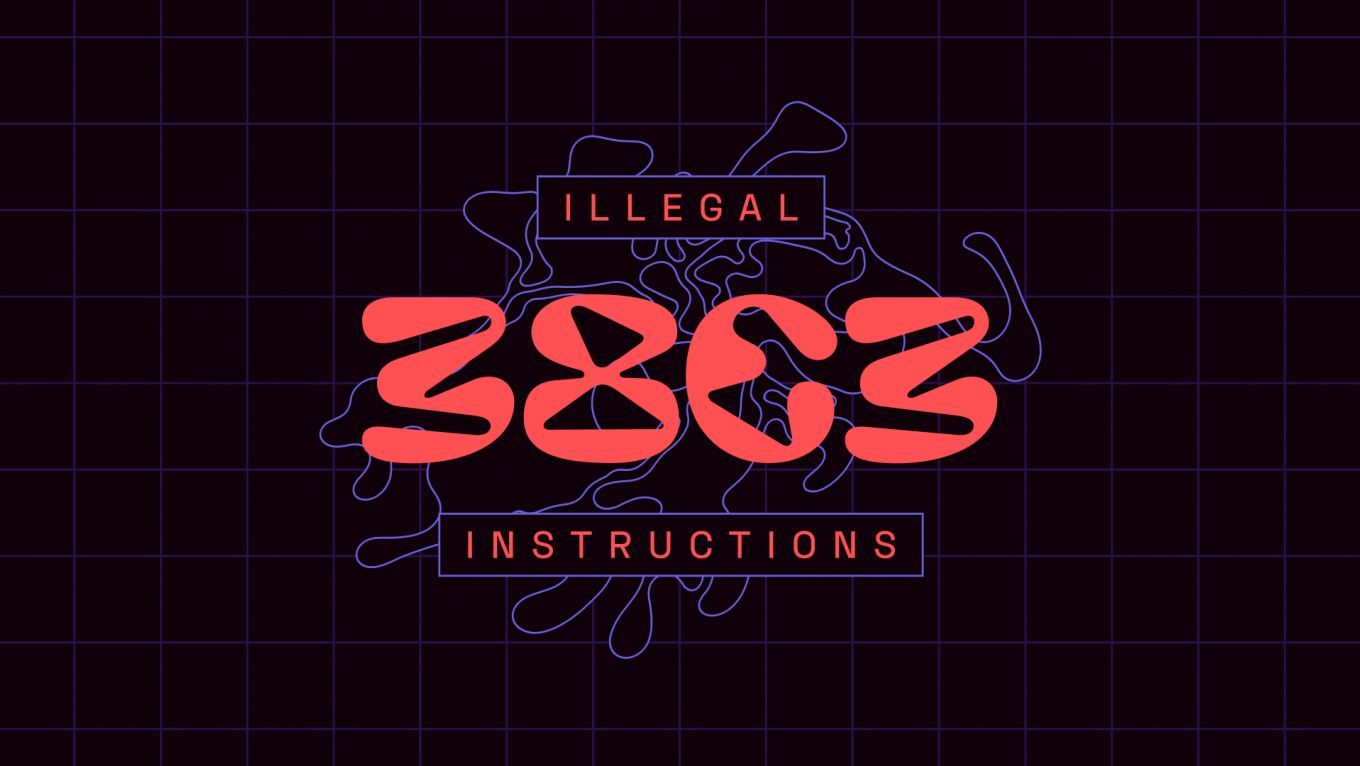Art & Beauty
arafed futures - An Artist Dialogue on Chip Storage and AI Accelerationism
December 28, 2024
5:15 PM – 6:15 PM Add to calendar
5:15 PM – 6:15 PM Add to calendar
Saal ZIGZAG
The global chip shortage during the COVID-19 pandemic brought semiconductor production into focus, sparking accelerated efforts to meet the surging demand for digital infrastructure. This phenomenon not only expanded AI capabilities but also introduced unexpected computational artifacts.
One such artifact is the word “arafed”, a term absent from any dictionary yet mysteriously appears across contexts from image prompts to Amazon product descriptions. Such unintended linguistic artifacts, born from transformer-based AI models, exemplify how digital artifacts emerge into realities with which we cohabitate.
The talk investigates how supply-chains break and AI-words spread from an artistic research perspective. Mapping both the abstract landscapes of embedding spaces, that are filled with emergent words and images, and the tangible, geopolitical realities of global semiconductor supply chains.
The accelerating pace of generative AI has put a strain on the interconnected software and hardware systems necessary for generative AI. The artist duo explores the media specificity of generative artificial intelligence. The talk consists of two parts: The material aspects of AI, specifically the story of semiconductor and chip shortage. And the spread of hallucinations like terms that escaped their embedding space into language.
The working of LLMs is often limited by computational power. These obstacles tethered abstract computation to the physical world, exposing how materiality plays a critical role in the implementation of AI. The investigation begins by examining the causes of the chip shortage — a disruption that brought the semiconductor industry and its surrounding geopolitical tensions into discourse.
On the hardware level, NVIDIA’s A100 chips, produced using Taiwan’s TSMC 7nm process, exemplify this intersection, providing the power to expand large language models (LLMs) and image generators. On the software level, the increasing demand for ai-as-service accelerates the use of models with complex pipelines. This interconnected use of models, in turn, leads to the emergence of unexpected artifacts that are morphing back into everyday reality.
While browsing AI-generated images on social media, one might come across the word "arafed" in image descriptions, such as, "an arafed man in a white robe riding on top of a blue car.". Yet, a dictionary definition is nowhere to be found. An image search for "arafed" reveals something striking: all resulting images appear AI-generated, spread across various image-sharing and stock photography platforms.
The term "arafed" seems to lack a clear origin, but a few posts attribute it to the BLIP-2 model, an image-captioning system that generates descriptive text from image inputs. However, the BLIP-2 paper doesn't mention "arafed" but running BLIP-2 clearly produces descriptions containing this artifact-like word, as if "arafed" has embedded itself in the model's vocabulary. Through the widespread and often unintentional use of BLIP-2 in libraries, extensions, and services, the interconnected nature of software has spread the word into research papers, Amazon descriptions, and even other datasets, further revealing the brittle infrastructure generative-ai systems are built upon.
Additional information
| Live Stream | https://streaming.media.ccc.de/38c3/zigzag |
|---|---|
| Type | Talk |
| Language | English |
More sessions
| 12/27/24 |
In a world dominated by digital communication and the drive toward linguistic unification, the simple act of 'typing' varies significantly across languages and writing systems. For European languages like English and German, typing typically involves a set of about 100 letters and symbols. In contrast, Japanese—and by extension, Okinawan—requires three distinct scripts: hiragana, katakana, and kanji. Each of these adds layers of complexity and cultural depth to written expression. This ...
|
| 12/27/24 |
We built an Ethical Hardware Kit with a PCB microcontroller made of wild clay retrieved from the forest in Austria and fired on a bonfire. Our conductive tracks use urban-mined silver and all components are re-used from old electronic devices. The microcontroller can compute different inputs and outputs and is totally open source.
|
| 12/27/24 |
UBERMORGEN infiltriert Kunst, Medien und digitale Monokulturen mit subversiver Affirmation. Wie Donald Trump auch, zerstören sie täglich ihr Geschäftsmodell, um daraus radikal neue Lösungen zu schaffen. Anhand von Projekten wie Vote-Auction, Google Will Eat Itself und PMC Wagner Arts dokumentieren sie ihre künstlerische Evolution im Never-Ending Now. Chaos ist ihre Methode, Kunst ihre Neue Ehrlichkeit, Klarheit ihre Waffe.
|
| 12/27/24 |
Artist Andrei Molodkin held $45million of art hostage to free Julian Assange. He vowed to dissolve Picasso, Rembrandt, Warhol and other masterpieces in acid using a dead man’s switch device inside a 29-tonne Grade 5 Safe Room if Julian Assange was to die in prison. The talk will explain the process and methodology.
|
| 12/27/24 |
Modern 3D capture through Gaussian Splatting and human memory reveal parallel landscapes – where precise centers fade into probabilistic smears at the edges, and gaps hold as much meaning as detail. This is about the preservation of an ephemeral present in digital amber, an interrogation of how we reconstruct both digital and remembered spaces.
|
| 12/27/24 |
The public image of dinosaurs is largely shaped by art. While paleontology is a dynamic and productive science, it is primarily through paleoart that our perception of prehistoric life takes form. By combining informed speculation with a deep understanding of anatomy, ecology, and geology, paleoartists continuously reimagine extinct organisms in innovative ways.
|
| 12/27/24 |
Welchen Einfluss hat die Form der Dinge? Wie wirken wir durch die Gestaltung unseren kulturellen Praxen, Architekturen, Sprachen und Strukturen auf uns und die uns umgebende Zukunft ein? Und warum findet sich in zeitgenössischer Design Theorie ein Verb wie *Futuring*?
|

